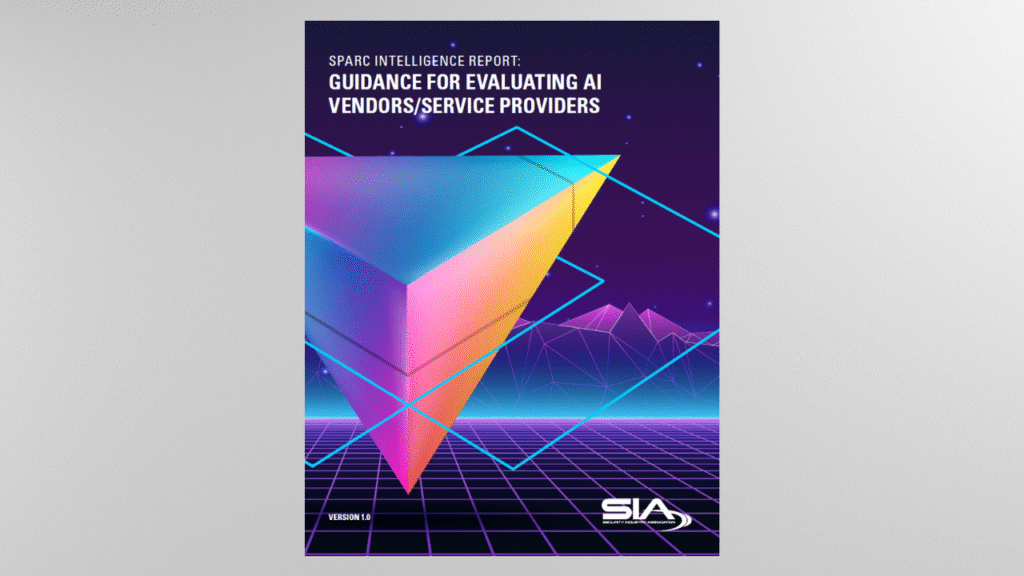SPARC Intelligence Report: Guidance for Evaluating Artificial Intelligence Vendors/Service Providers

About the Report
As an end user evaluating enterprise-class artificial intelligence (AI) software, it is essential to thoroughly understand not only the product’s advertised capabilities but also its underlying technology, data practices, security posture and compliance measures. AI systems differ significantly from traditional software due to their dynamic, data-driven nature, making it crucial to ask detailed, informed questions prior to procurement.The goal of this document is to empower end users to ask insightful, technically rigorous questions, helping them avoid costly mistakes, mitigate risks and ensure the solution aligns perfectly with their strategic, operational and compliance requirements.
The physical security industry is yet again in the midst of significant change due to technological innovations and investments in research and development among many companies within this industry. One of the current drivers of innovation is related to developments within the umbrella of artificial intelligence technologies that have recently reached the hype cycle, and the generic term “artificial intelligence” is overused by marketing groups and many other in our industry without a clear, technical explanation of what is meant when using this bloated technical term.
Driven by the Security Industry Association (SIA) Security Practitioners Advancing Real Conversations (SPARC) end-user community and supported by the SIA Voice of Industry (VOI) committee, this paper was developed to address the need for clarity of what is accurately meant when labeling a solution as artificial intelligence. This paper intends to clarify which specific AI technologies are in use by security solutions by establishing consistent terminology as well as educating industry professionals within their respective roles. More specifically, this paper also provides a “script” for end users to use when evaluating a physical security solution so all parties can accurately understand the core AI technologies in use. As the content in this paper crosses many technology areas and industry domains, our intent was to include a large number of professionals within this process, so we recognize that this paper would not be possible without not only support from the Security Industry Association, but also the support of the SIA AI Advisory Board and the International Association of Professional Security Consultants.
Topics discussed in this report include:
- An AI background, including history, major types of AI, AI constructs and references
- Key ethical concerns with AI in security
- SIA resources and initiatives around AI
- Recommended further reading
- An AI questionnaire that can be adapted and sent to prospective AI vendors and service providers
- And more!
Contributors:
- Bobby Louissaint—SPARC Chair
- King Lam—SPARC Vice Chair
- Phil Jang—SPARC VOC Rep
- Julaine Simmons—VOI Chair
- Brad Aikin—VOI Vice-Chair
- Heidi Tripp—VOI Vice-Chair
- Josh Chin—VOI Member, Content Contributor
- James Connor—VOI Member, Content Contributor
- Mark Schreiber—VOI Member, Original Draft Author, Content Contributor
This content is for SIA members only.
All employees of SIA member companies have access rights to this content. If you do not have an account with SIA, click here to create an account.
If you are not a SIA member, click here to join the SIA.
